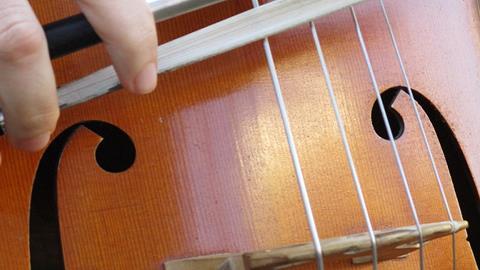Former Juilliard School cello professor Bonnie Hampton answers advises readers on how to encourage smooth bow changes in their students. From 2011.

On the cello, one might be told to lead the up bow with the wrist and then pull the down bow with the arm on the bow change. The arm is leading in both directions with the hand and fingers following.
But what about that momentary break in the sound, the slight accent one hears because of a quick flick of the hand? In trying to get a smooth, continuous sound, one needs to have the pressure or contact on the string remain constant, with the bow speed the same on the change. This is not so easy to control.
I like to think of the bow simply balancing on the string, with all of the joints of the arm being free and every part of the arm moving during the change, but only as much as is needed.
When we have too large a motion from the wrist, we hear it. If some part of the arm is not free, another part will make up for it with too large a motion. Again, everything is moving, but only in proportion and with as little as is needed.
When one watches great players, one sees no excess motions. Every joint is free and every part of the arm is involved. I like to make the bow change with the feeling of a circle or loop, not as if on the same level.
One can practise an entire bow stroke with short loops, working all the way down and then back up again. Or one might first work on two strings, D for the down bow, G for the up bow, with the wrist and fingers making the largest motion, but always with the arm leading and taking care to keep the contact with the string constant.
This article was published in the July 2011 issue as part of The Strad's Teacher talk series. Click here to subscribe or login.


































No comments yet